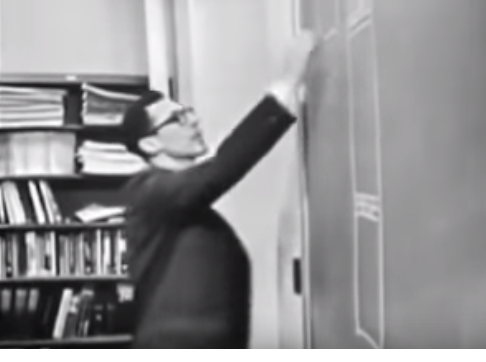Fernando Corbató, Early Operating System Pioneer And Password Inventor, Dies At 93
The first passwords were easily compromised, but Corbató's pioneering time sharing and operating system work led to the LAN, email, file sharing, and other technologies computer users now take for granted, as well as "castrated Multix," a.k.a. UNIX.

Fernando Corbató, an early computer pioneer who is credited with not only developing one of the world's first operating systems but also the idea of using passwords for security, passed away Friday at the age of 93.
Corbató was the leader of a team that developed CTSS, or Compatible Time-Sharing System, one of the world's first operating systems.
CTSS was pioneering in many ways. CTSS was a key building block to such capabilities as email, virtual machines, instant messaging, and file sharing.
[Related: Chuck Thacker, Developer Of The Xerox Alto Personal Computer, Dies at 74]
Corbató, known as "Corby" to his colleagues at the Massachusetts Institute of Technology, in the late 1950s led research into time sharing that formed the foundation of a project that later became MIT's Laboratory for Computer Science, or LCS.
The promise of time sharing was appreciated at a time when computers were extremely expensive and could only run one program at a time.
"The rule of thumb was that the computers cost as much as commercial airliners. … People woke up and said this is a terribly awkward way of dealing with computers," Corbató told CRN in a 1999 interview.
Corbató and his team in 1961 developed a prototype of the (CTSS), which in the beginning supported around 20 users at a time.
CTSS in the early 1960s was given a password system that allowed each user to prevent others from accessing their files. However, according to Wired, the system was far from foolproof, as developers discovered in 1966 when a software bug messed up the system's welcome message and allowed anyone who logged in to access the entire list of CTSS passwords.
That resulted from one of the researchers, Allan Scherr, looking for a way to get more time on CTSS, who eventually printed a list of all the passwords and passed them around to others to spread the guilt.
In 1962, MIT's LCS was chosen to be part of the U.S. Department of Defense's Advanced Research Projects Agency (ARPA), and contributed to the development of Project MAC, which was an acronym for machine-aided cognition and multiple-access computer.
A predecessor to today's servers, Project MAC ran Corbató's CTSS on a central computer, a modified IBM 7094, with access terminals spread across the campus. Users were allotted storage space which they could access via password and could share their files with other users. Gone was the need for punch cards, as users interfaced with the system via teletype machines.
Many of today's technological issues were first explored in Project MAC. For the first time, a computer project required an editorial review board to determine which information would become part of the systems' public library. Security, privacy and online anonymity issues developed as well.
"In the past, you knew who had access by virtue of their presence in the computer room," said Corbató. "It was the beginning of the anonymity problem that exists with a vengeance today on the World Wide Web. It came with remote access."
In addition to being an ancestor to the modern local area network, Project MAC also had the first E-mail, chat rooms and even a primitive word processing program.
Project MAC, with the help of Bell Telephone Laboratories, led to the development of Multics (Multiplexed Information and Computing Service), the operating system that followed CTSS. It was the first OS to feature a tree-structured filing system.
However, slow development of Multics led to Bell to drop the project, but two Bell researchers continued to develop Multics on their own to develop OS UNICS, which was a pun that meant castrated Multics, which eventually became known as UNIX.
"It was a joke on Multics," Corbató said. "They just thought they were being cute."
MIT on Monday said that Corbató was born on July 1, 1926, in Oakland, Calif., and at age 17 enlisted as a technician in the U.S. Navy where he worked with radar and sonar systems. After World War II, he got a master’s degree at Caltech and then got his PhD in physics.
At MIT, he was recruited to work on Project Whirlwind, which MIT called the first computer capable of real-time computing. He eventually became depute director of MIT's Computation Center.
Besides his pioneering work in multi-user operating systems and passwords, Corbató is also known for Corbató's Law, which states that, regardless of the computer language used, the number of lines of code a programmer can write in a day is the same.
Corbató is survived by his wife Emily Corbató, two stepsons, a brother, two daughters from his first wife, and five grandchildren.
Jennifer Hagendorf contributed to this story.